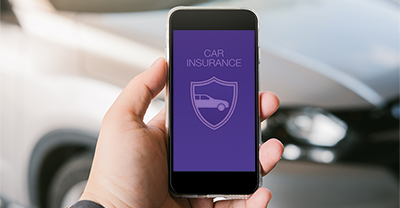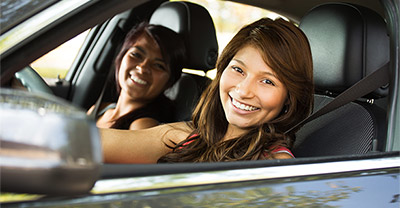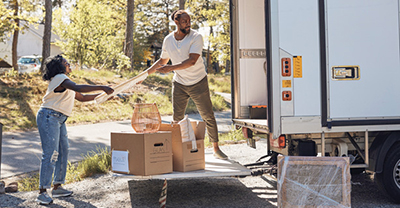Understanding property damage liability insurance
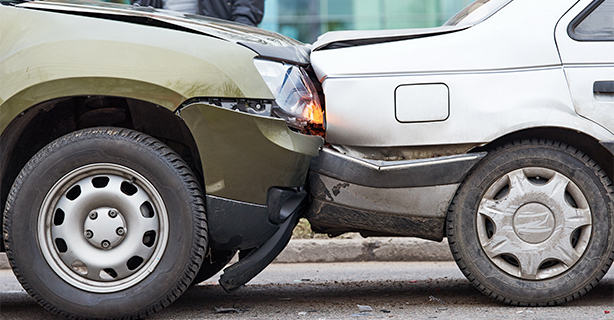
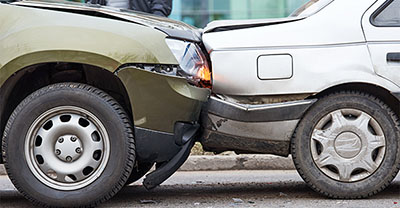
0 min. read
What is property damage liability insurance?
Property damage liability insurance helps pay for the cost of repairs for the damage you cause to another person’s vehicle or property in a covered accident where you’re at fault. Your state probably requires you to carry this coverage if you own a vehicle.
Carrying property damage liability insurance can help cushion the financial blow if you hit another person’s vehicle or property. This coverage can pay a certain amount (up to your coverage limit) if someone files a claim against you for property damage following an accident. Explore Dairyland’s cheap car insurance options to find the coverage that fits your lifestyle and budget.
What property damage liability covers
Property damage liability insurance can help protect you from some of the financial burden of paying for damage to another person’s vehicle or property resulting from an accident you cause. Depending on your policy, it could also cover legal fees from your property damage claim.
The two types of property damage liability insurance
Damage to another vehicle
If you get into an accident and damage another person’s car, property damage liability can help cover your financial liability for the costs of:
Repairs
Parts
Labor
Damage to other kinds of property
Vehicles aren’t the only things that can be damaged in an accident. Property damage liability insurance can help cover damage you cause to another person’s property, such as:
Buildings, like homes or businesses
Fences
Mailboxes
Lampposts
Property damage liability insurance can also help cover damage to public property, like:
Road signs
Bridges
The costs of removing debris from the accident site
What doesn’t property damage liability insurance cover?
While property damage liability insurance can cover several common liabilities that arise from an accident you cause, there are some important limitations you should know about.
Damage to your own property
Property damage liability insurance applies to damage to another person’s property resulting from an accident you’re at fault for, but it doesn’t cover damage to your own property. You can help cover damage to your own property by adding collision insurance to your insurance policy.
Although no state laws require collision insurance, it can be worthwhile if you want your property to be covered in accidents, regardless of fault.
If your vehicle or property is damaged in an accident caused by another driver, their property damage liability insurance may cover the damages to your property. Adding uninsured motorist property damage coverage to your policy can help cover your damaged property if the at-fault motorist doesn’t have coverage.
Bodily injuries
As the name suggests, property damage liability insurance only covers damage to things—not peoples’ injuries and the related costs. Injury expenses can be covered by bodily injury liability insurance which is another requirement in most states and falls under a separate coverage limit.

Get a free auto insurance quote.
Property damage liability requirements
Property damage liability insurance is required in all states that require motorists to carry auto insurance policies.
Property damage liability insurance requirements by state
Each state has its own legal minimum requirements for property damage liability insurance. Most states require at least $25,000 in coverage, but there’s a range—in Pennsylvania, for example, the minimum requirement is $5,000.
These minimums are on a per-accident basis. This means your insurance provider must cover your PD liability (up to your state’s required minimum limit) for damages arising from each accident you’re at fault for.
How much property damage liability insurance do you need?
You legally only need to meet your state’s minimum required coverage property damage liability limits.
State | Property damage liability per accident |
$25,000 | |
$15,000 | |
$25,000 | |
$15,000 | |
$15,000 | |
$25,000 | |
$10,000 | |
$10,000 | |
$25,000 | |
$15,000 | |
$20,000 | |
$25,000 | |
$15,000 | |
$25,000 | |
$25,000 | |
$25,000 | |
$15,000 | |
$10,000 | |
$25,000 | |
$25,000 | |
$25,000 | |
$20,000 | |
$10,000 | |
$25,000 | |
$25,000 | |
$20,000 | |
$5,000 | |
$25,000 | |
$25,000 | |
$25,000 | |
$25,000 | |
$25,000 | |
$10,000 | |
$25,000 | |
$10,000 | |
$25,000 | |
$10,000 | |
$20,000 |
Keep in mind accidents can quickly become expensive, and realistically, minimum coverage can be insufficient in a lot of cases. Here’s an example that illustrates this:
Let’s say your state minimum requirement for property damage liability insurance is $25,000. That’s only half the average price of a new car. So, if you’re at fault in an accident that damages someone else’s brand-new car, your minimum coverage might not cover the cost, and you’ll have to pay the rest out of pocket.
Obviously, the amount of coverage you carry largely depends on what you can afford.
What’s the difference between liability and property damage liability?
In insurance, liability is the amount of money you’re legally obligated to pay others. For example, if you cause an accident that results in $150,000 of damage, you’re legally responsible for the full $150,000.
Liability insurance is a safety net that can cover some—or all—of your liabilities that result from an accident you cause. If you’re liable for $150,000 but you have liability insurance with a $100,000 policy limit, you may have to pay the remaining $50,000 out of your own pocket. If you have higher coverage, you might not pay anything out of pocket at all.
For auto insurance, liability covers two distinct areas of risk: property damage and bodily injury. While property damage covers damage you cause to other vehicles, buildings, and public or private property, bodily injury covers the injuries of the people involved.
Property damage liability costs
There are a lot of factors that contribute to your insurance rates. These factors include things that are specific to you and your household, such as:
The number of drivers in your home
Your accident and traffic violation history
What vehicle you drive
Other factors may be out of your control, such as your age or the number of drivers in your area.
Do I need property damage liability and bodily injury liability?
In most states, you’re required to carry both property damage liability and bodily injury liability insurance. Florida is the only state that requires property damage liability but not bodily injury liability coverage.
While property damage liability insurance can help cover you for property damages another party claims against you following an accident you cause, bodily injury liability can help pay for the other person’s hospital bills and other related medical expenses if they’re injured in an accident you cause.
Remember, these two coverages don’t cover your own property—for that, you need collision coverage.
How do you file a property damage liability claim?
If you’re in an accident, the first thing you should do is make sure everyone involved is safe. Once you’ve moved to a safe area and called the police, collect the following information from any other drivers or property owners involved in the accident:
Name
Phone number
Insurance provider
Insurance policy number
Document the scene and circumstances of the accident to the best of your ability, including pictures of your vehicle and other vehicles or property involved.
Don’t discuss fault with the police, other drivers, or your insurance provider, even if you believe you were responsible for the accident. Let the insurance adjuster determine fault—your job is simply to record facts as they truly are and report the accident to your insurance agent or provider. Call them as soon as you’ve gathered the necessary info and let them take it from there.
How does property damage liability insurance work?
If you’re involved in a covered accident and the other involved party files a claim against you for property damage, an insurance adjuster will:
Determine who’s legally at fault in the accident
Provide an estimate for how much the repairs will cost
Establish how much your policy will pay out, if you’re found to be at fault
Your property damage liability insurance can pay out up to your limits with no deductible or co-pay. This means if the cost to repair the damage is less than your coverage limit, you may not have to pay anything out-of-pocket. However, your insurance rates might increase after you’re at fault for an accident.
Property damage liability insurance FAQs
Is property damage liability insurance required?
Yes. In all states that require auto insurance, drivers are required to carry property damage liability insurance. The minimum coverage limits vary from $5,000 to $25,000, depending on your state.
Is there a deductible for property damage liability claims?
No. When you’re at fault for a covered accident, your insurance provider pays the liability claim up to your coverage limit. As long as the cost of the accident is lower than your coverage limit, you won’t have to pay anything out of pocket for property damage liability. It’s important to note, however, that your premiums may go up afterwards.
What’s the difference between property damage liability and comprehensive coverage?
Property damage liability helps cover damage you cause to someone else’s vehicle or property, while comprehensive helps cover damage caused to your vehicle by something other than a collision.
For example, if you’re found to be at fault in an accident where the other person’s car is damaged, property damage liability could help you out. If your vehicle is damaged by something like hail, vandalism, or hitting a deer, comprehensive insurance can have your back.
What’s classified as property damage?
Property damage includes damage to other vehicles, buildings, signs, mailboxes, bridges, and other personal or public property. In short, anything physically damaged as a result of a car accident can be classified as property damage.
Remember, property damage liability insurance only covers your obligation to pay for repairs to other people’s personal or public property—it doesn’t cover repairs to your own vehicle. For that, you need collision insurance.
The general information in this blog is for informational or entertainment purposes only. View our blog disclaimer.
*Data accuracy is subject to this article's publication date.








